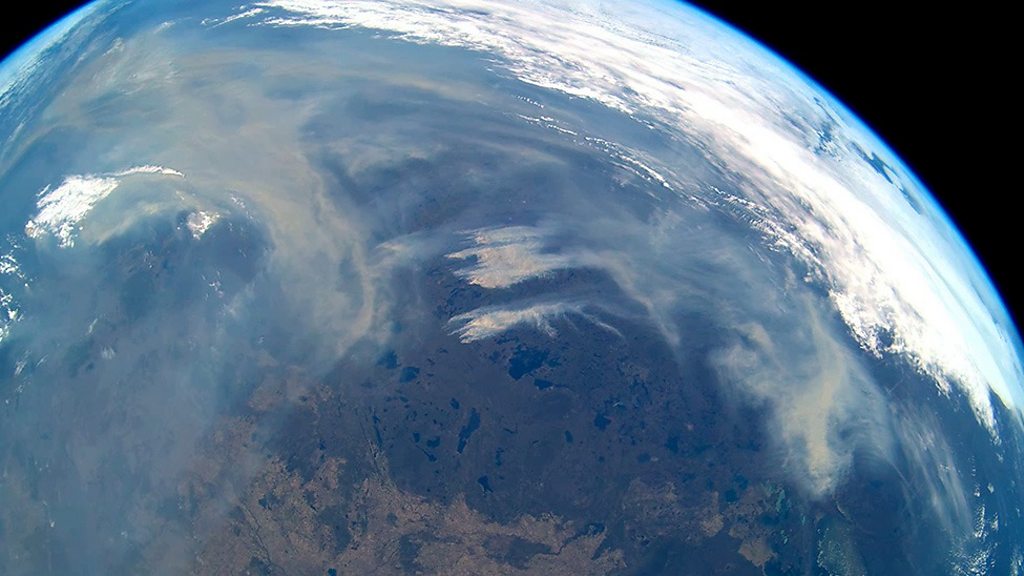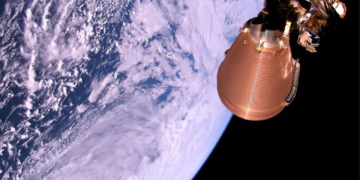Imagine watching our planet in stunning detail, live and for free.
That’s the future a UK startup, SEN, is creating by launching high-definition cameras to the International Space Station (ISS). Soon, you’ll be able to witness Earth from an astronaut’s perspective, soaking in breathtaking sunrises, sunsets, and ever-changing landscapes – all in glorious 4K resolution.

This isn’t just a visual feast; it’s a chance to witness the dynamic processes that shape our planet, a testament to the power of international collaboration, and a glimpse into the future of a more accessible space for everyone.
A Legacy of Earthly Beauty from Space
SEN isn’t new to space cinematography. They already have a camera on a small satellite streaming live video. But this ambitious project takes things a step further. Partnering with the global spacefaring leader, SpaceX, SEN sent their trio of 4K cameras on a journey to the ISS aboard the reliable Dragon spacecraft.
This workhorse has a proven track record, having delivered crucial cargo and even ferried astronauts on missions like Crew-7. The collaboration between SEN and SpaceX highlights the growing commercialization of space, where private companies are playing an increasingly important role in scientific exploration and public engagement.
This trend not only promises a more dynamic and cost-effective approach to space exploration but also opens doors for wider public participation in these endeavors. Imagine classrooms around the world tuning into the live feed, sparking curiosity and igniting a passion for science in the next generation.
Mounting the Marvels with Robotic Precision
Once at the ISS, the station crew, a multinational team of highly trained astronauts, will prep the SEN cameras for their prime location. Using the Canadarm2, a marvel of robotic engineering, the cameras will be carefully mounted on the Airbus Bartolomeo platform. While we eagerly await the live feed, scheduled for May, some patience is required. This meticulous process ensures the cameras capture the most breathtaking and scientifically valuable views. The expertise of the astronauts and the precision of the Canadarm2 are both crucial elements in this operation. The international makeup of the ISS crew further underscores the collaborative spirit that has driven space exploration since its inception. From the American ingenuity behind the Canadarm2 to the international partnership that keeps the ISS operational, this project is a shining example of what can be achieved when nations work together to push the boundaries of human knowledge.
A Multi-Angle Marvel: Capturing Earth’s Symphony
SEN’s vision extends beyond a single perspective. They’ve equipped the cameras with distinct roles, transforming them into celestial videographers, each offering a unique window into the wonders of our planet and the bustling world of the ISS:
- Sunrise Symphonies: One camera will be fixated on the Earth’s horizon, capturing the awe-inspiring spectacle of sunrises and sunsets, painting the atmosphere with vibrant hues as our star dips below the horizon. This view not only holds aesthetic beauty but also provides valuable data on atmospheric composition and weather patterns. Studying these phenomena can help us better understand and predict climate change, a pressing issue facing our planet.
- Ever-Changing Landscapes: Another camera will gaze directly down at our planet, offering a dynamic view of ever-evolving landscapes. Witnessing the movement of clouds, the flow of rivers, and the ever-changing tapestry of human civilization will provide a deeper appreciation for the dynamic nature of our planet. This view can also be used to monitor environmental changes, such as deforestation or the spread of wildfires, providing valuable data for researchers and policymakers. Imagine scientists using this real-time data to track deforestation patterns in the Amazon rainforest or monitor the spread of wildfires in California.
- Spaceport in Action: The third camera will be trained on the docking point, documenting the arrival and departure of spacecraft like the SpaceX Dragon and the soon-to-debut Boeing Starliner. This view offers a glimpse into the bustling world of the ISS, a hub of international collaboration and scientific discovery. Witnessing the comings and goings of spacecraft underscores the importance of the ISS as a stepping stone for future space exploration endeavors, such as missions to the Moon and Mars. It’s a constant reminder that the ISS is not just a scientific marvel, but a launchpad for humanity’s next giant leap into the cosmos.
A Free Ticket to a Celestial Spectacle
SEN’s mission is driven by a desire to share the wonders of space with everyone. Their livestream will be free and accessible, allowing anyone to witness Earth from a truly unique vantage point. It’s a chance to experience the world through an astronaut’s eyes and appreciate the breathtaking beauty of our home planet.
This democratization of space exploration fosters a sense of global citizenship and inspires the next generation of scientists, engineers, and space dreamers.



















